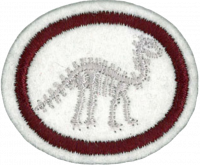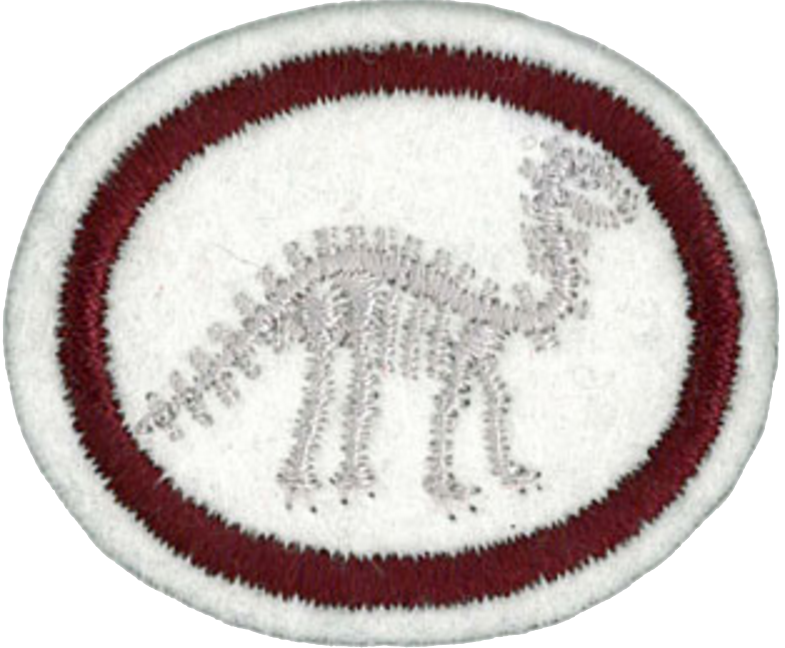Difference between revisions of "AY Honors/Fossils/Answer Key/es"
From Pathfinder Wiki
(Created page with "{{clear}}") |
(Updating to match new version of source page) |
||
| (26 intermediate revisions by 2 users not shown) | |||
| Line 1: | Line 1: | ||
| − | + | {{HonorSubpage}} | |
| − | |||
| − | |||
| − | {{ | ||
| − | |||
| − | |||
| − | |||
| − | |||
| − | |||
| − | |||
| − | |||
| − | |||
| − | }} | ||
| − | |||
| − | |||
| − | |||
| − | |||
| − | |||
| − | |||
| − | |||
<section begin="Body" /> | <section begin="Body" /> | ||
{{ansreq|page={{#titleparts:{{PAGENAME}}|2|1}}|num=1}} | {{ansreq|page={{#titleparts:{{PAGENAME}}|2|1}}|num=1}} | ||
| Line 50: | Line 31: | ||
{{clear}} | {{clear}} | ||
| − | + | {{clear}} | |
<noinclude></noinclude> | <noinclude></noinclude> | ||
| Line 56: | Line 37: | ||
{{ansreq|page={{#titleparts:{{PAGENAME}}|2|1}}|num=2}} | {{ansreq|page={{#titleparts:{{PAGENAME}}|2|1}}|num=2}} | ||
<noinclude></noinclude> | <noinclude></noinclude> | ||
| − | <!-- 2. | + | <!-- 2. Tener una breve definición de cada una de las siguientes en su libreta de notas: --> |
<noinclude></noinclude> | <noinclude></noinclude> | ||
{{ansreq|page={{#titleparts:{{PAGENAME}}|2|1}}|num=2a}} | {{ansreq|page={{#titleparts:{{PAGENAME}}|2|1}}|num=2a}} | ||
| Line 118: | Line 99: | ||
<noinclude></noinclude> | <noinclude></noinclude> | ||
| − | |||
| − | |||
| − | |||
| − | |||
| − | |||
| − | |||
| − | |||
| − | |||
<noinclude></noinclude> | <noinclude></noinclude> | ||
{{CloseReq}} <!-- 2o --> | {{CloseReq}} <!-- 2o --> | ||
| Line 145: | Line 118: | ||
{{CloseReq}} <!-- 2s --> | {{CloseReq}} <!-- 2s --> | ||
{{ansreq|page={{#titleparts:{{PAGENAME}}|2|1}}|num=2t}} | {{ansreq|page={{#titleparts:{{PAGENAME}}|2|1}}|num=2t}} | ||
| − | <noinclude></noinclude> | + | <noinclude></noinclude><noinclude></noinclude> |
| − | |||
| − | <noinclude></noinclude> | ||
{{CloseReq}} <!-- 2t --> | {{CloseReq}} <!-- 2t --> | ||
{{ansreq|page={{#titleparts:{{PAGENAME}}|2|1}}|num=2u}} | {{ansreq|page={{#titleparts:{{PAGENAME}}|2|1}}|num=2u}} | ||
| Line 157: | Line 128: | ||
{{ansreq|page={{#titleparts:{{PAGENAME}}|2|1}}|num=3}} | {{ansreq|page={{#titleparts:{{PAGENAME}}|2|1}}|num=3}} | ||
<noinclude></noinclude> | <noinclude></noinclude> | ||
| − | <!-- 3. | + | <!-- 3. Visitar un museo donde los fósiles se encuentran en exhibición y hacer un informe escrito u oral de su viaje. --> |
| − | |||
| − | |||
| − | |||
| − | |||
<noinclude></noinclude> | <noinclude></noinclude> | ||
| Line 167: | Line 134: | ||
{{ansreq|page={{#titleparts:{{PAGENAME}}|2|1}}|num=4}} | {{ansreq|page={{#titleparts:{{PAGENAME}}|2|1}}|num=4}} | ||
<noinclude></noinclude> | <noinclude></noinclude> | ||
| − | <!-- 4. | + | <!-- 4. Describir el proceso de la correcta extracción de los especímenes delicados. Decir cómo un esqueleto de un dinosaurio gigantesco u otros fósiles serían extraídos. ¿Por qué no debería principiantes extraer esos especímenes? ¿Qué trabajo debería ser realizado por el principiante cuando se considera que es evidentemente un fósil valioso? --> |
| − | |||
| − | |||
| − | + | {{clear}} | |
| − | + | {{clear}} | |
| − | + | {{clear}} | |
| − | + | {{clear}} | |
| − | + | {{clear}} | |
| − | + | {{clear}} | |
| − | |||
| − | + | {{clear}} | |
| − | |||
<noinclude></noinclude> | <noinclude></noinclude> | ||
| Line 191: | Line 154: | ||
{{ansreq|page={{#titleparts:{{PAGENAME}}|2|1}}|num=5}} | {{ansreq|page={{#titleparts:{{PAGENAME}}|2|1}}|num=5}} | ||
<noinclude></noinclude> | <noinclude></noinclude> | ||
| − | <!-- 5. | + | <!-- 5. Explicar la diferencia que los científicos dan de la presencia de fósiles en relación a los evolucionistas y creacionistas. --> |
| − | |||
<noinclude></noinclude> | <noinclude></noinclude> | ||
| Line 198: | Line 160: | ||
{{ansreq|page={{#titleparts:{{PAGENAME}}|2|1}}|num=6}} | {{ansreq|page={{#titleparts:{{PAGENAME}}|2|1}}|num=6}} | ||
<noinclude></noinclude> | <noinclude></noinclude> | ||
| − | <!-- 6. | + | <!-- 6. De la Biblia y los escritos de Elena G. de White, citar declaraciones para explicar el origen de los siguientes materiales: <br>a. Carbón <br>b. Petróleo <br>c. Fósiles <br>d. Caliza--> |
{| border=1 cellspacing=1 cellpadding=5 width=75% align="center" | {| border=1 cellspacing=1 cellpadding=5 width=75% align="center" | ||
|- | |- | ||
| − | ! | + | !De ''[https://text.egwwritings.org/publication.php?pubtype=Book&bookCode=PP54&lang=es&collection=56§ion=236&pagenumber=98 Historia de Patriarcas y Profetas, p. 98], [https://text.egwwritings.org/publication.php?pubtype=Book&bookCode=PP54&lang=es&collection=56§ion=236&pagenumber=99 99] |
|- | |- | ||
| − | |'' | + | |''Por doquiera yacían cadáveres de hombres y animales. El Señor no iba a permitir que permaneciesen allí para infectar el aire por su descomposición, y por lo tanto, hizo de la tierra un vasto cementerio. Un viento violento enviado para secar las aguas, las agitó con gran fuerza, de modo que en algunos casos derribaron las cumbres de las montañas y amontonaron árboles, rocas y tierra sobre los cadáveres.'' |
| − | '' | + | ''En ese tiempo inmensos bosques fueron sepultados. Desde entonces se han transformado en el carbón de piedra de las extensas capas de hulla que existen hoy día, y han producido también enormes cantidades de petróleo. Con frecuencia la hulla y el petróleo se encienden y arden bajo la superficie de la tierra. Esto calienta las rocas, quema la piedra caliza, y derrite el hierro.'' |
|} | |} | ||
| − | + | {{clear}} | |
<noinclude></noinclude> | <noinclude></noinclude> | ||
{{CloseReq}} <!-- 6 --> | {{CloseReq}} <!-- 6 --> | ||
<noinclude></noinclude> | <noinclude></noinclude> | ||
| − | == | + | ==Referencias== |
| − | + | <noinclude></noinclude> | |
| − | |||
| − | |||
| − | |||
| − | |||
| − | |||
| − | [[Category: | + | [[Category:AY Honors/noindex{{GetLangSuffix}}|{{SUBPAGENAME}}]] |
| − | + | {{CloseHonorPage}} | |
| − | |||
| − | |||
Latest revision as of 14:51, 2 January 2023
1
Hacer una colección de al menos 10 diferentes clases de fósiles y etiquetar cada uno con su nombre y ubicación geográfica.
2
Tener una breve definición de cada una de las siguientes en su libreta de notas:
2a
Geología
2b
Fósiles
2c
Catastrofismo
2d
Paleontología
2e
Graptolitos
2f
Trilobites
2g
Dinosaurio
2h
Mamut
2i
Mastodonte
2j
Crinoidea
2k
Lingula
2l
Calamites
2m
Foraminíferos
2n
Radiolaria
2o
Paleozoico
2p
Mesozoico
2q
Cenozoico
2r
Pleistoceno
2s
Paleobotánica
2t
Pelecípodo (bivalvos)
2u
Braquiópodo
3
Visitar un museo donde los fósiles se encuentran en exhibición y hacer un informe escrito u oral de su viaje.
4
Describir el proceso de la correcta extracción de los especímenes delicados. Decir cómo un esqueleto de un dinosaurio gigantesco u otros fósiles serían extraídos. ¿Por qué no debería principiantes extraer esos especímenes? ¿Qué trabajo debería ser realizado por el principiante cuando se considera que es evidentemente un fósil valioso?
5
Explicar la diferencia que los científicos dan de la presencia de fósiles en relación a los evolucionistas y creacionistas.
6
De la Biblia y los escritos de Elena G. de White, citar declaraciones para explicar el origen de los siguientes materiales:
- a. Carbón
- b. Petróleo
- c. Fósiles
- d. Caliza
| De Historia de Patriarcas y Profetas, p. 98, 99 |
|---|
| Por doquiera yacían cadáveres de hombres y animales. El Señor no iba a permitir que permaneciesen allí para infectar el aire por su descomposición, y por lo tanto, hizo de la tierra un vasto cementerio. Un viento violento enviado para secar las aguas, las agitó con gran fuerza, de modo que en algunos casos derribaron las cumbres de las montañas y amontonaron árboles, rocas y tierra sobre los cadáveres.
En ese tiempo inmensos bosques fueron sepultados. Desde entonces se han transformado en el carbón de piedra de las extensas capas de hulla que existen hoy día, y han producido también enormes cantidades de petróleo. Con frecuencia la hulla y el petróleo se encienden y arden bajo la superficie de la tierra. Esto calienta las rocas, quema la piedra caliza, y derrite el hierro. |


